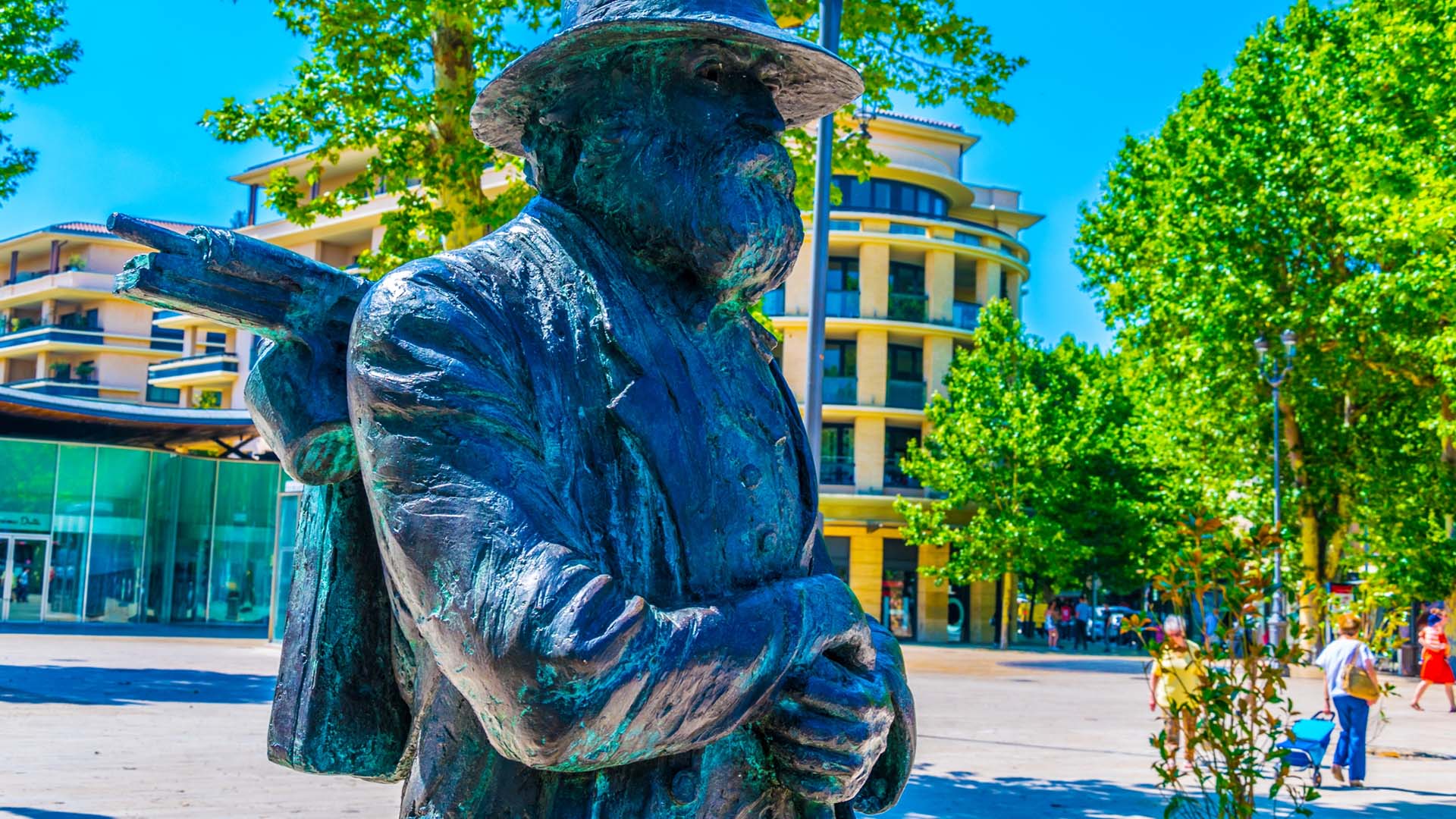|
Listen To Article
|
It began with the light.
In Aix-en-Provence, light sculpts more than it illuminates. It moves like a brushstroke across ochre cliffs, slips into fountains, and lingers in vineyard mist. For Paul Cézanne, this light was muse and obsession. In 2025, it animates the city.
Before I set foot in Aix-en-Provence, I imagined I knew what to expect. Sunlight on shutters. Rosé in the garden. Maybe a Cézanne print or two, framed in the salon of a boutique hotel. But the city had other ideas. Here, art isn’t hung—it’s inhaled. It travels with you. It’s in the curve of a limestone wall, the scent of fig trees on the breeze, the geometry of vineyard rows mirroring brushstrokes you’ve somehow seen before.
As 2025 unfolds, Cézanne’s spirit feels even more alive. His year-long presence in Aix isn’t just commemorative—it’s kinetic. The entire region is moving to his rhythm.
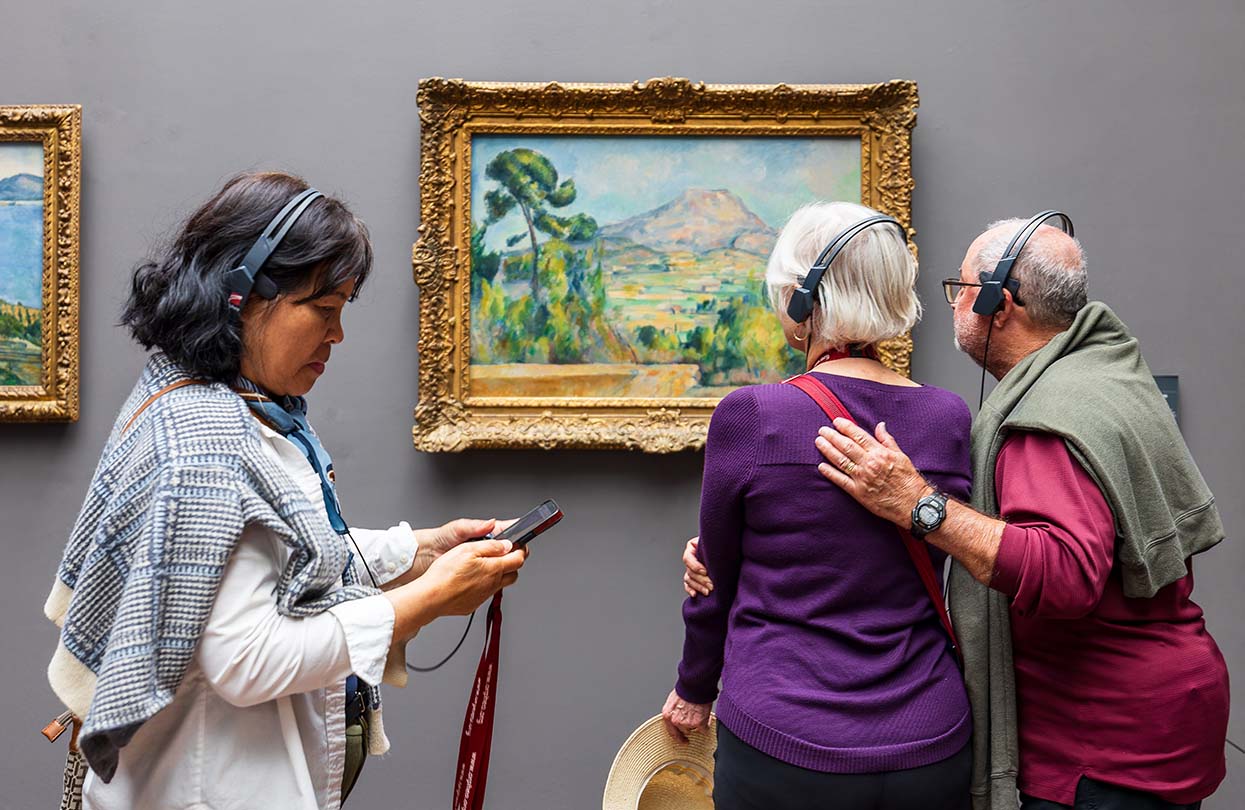
Painting by Paul Cezanne, Image by Shutterstock
The Year of Cézanne in Aix-en-Provence is an invitation to live art in motion. Culture, cuisine, and sensory experiences reveal Provence as an immersive canvas, not just a destination.
Private Access to Genius: Cézanne’s World, Intimately Rendered
My journey began with a private tour tailored for the curious and the quietly reverent—art lovers who seek more than just museum walls. With an English-speaking art historian as our guide, we moved through Cézanne’s life in reverse: starting at the famed Atelier des Lauves where sunlight still pierces the same windows that once warmed his easel. Then to Bastide du Jas de Bouffan, his childhood estate now reopened, its timeworn walls whispering of the family life and artistic rebellion that once housed it.
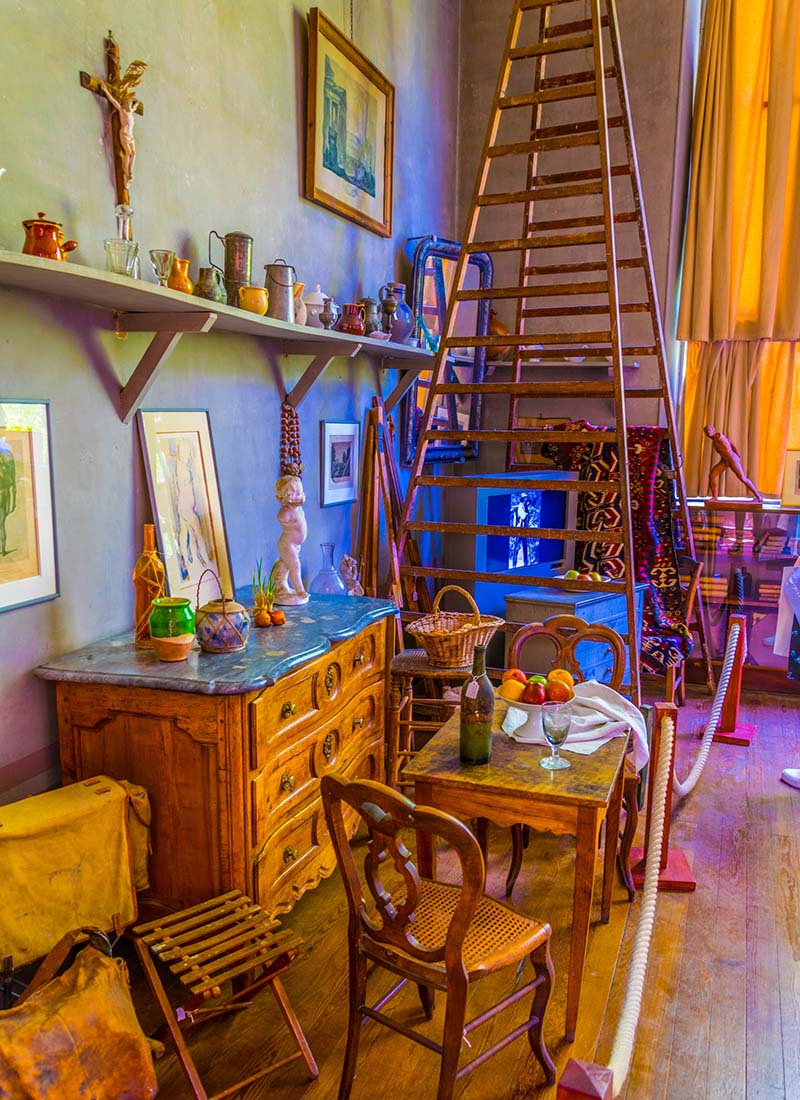
Interior of studio of Paul Cezanne in Aix-en-Provence, Image by trabantos, Shutterstock
From there, our chauffeur drove us through olive-laced roads to the foot of Montagne Sainte-Victoire. That jagged profile, a recurring motif in Cézanne’s work, seemed to flicker in and out of view like an apparition depending on where you stood. This wasn’t sightseeing. It was immersion.
A Rare Hour in Cézanne’s Secret Studio
The highlight, however, came after sunset.
As part of a rare private arrangement, I was granted after-hours access to the Bibémus Quarries. No crowds. Just ochre cliffs, pine shadows, and silence—the same elements Cézanne saw when he painted here in solitude. A renowned art historian led us through the space, illuminating it with lanterns and sharing stories, as well as insights into the geometry that helped transition art into modernism.
What struck me most during our time in the Bibémus Quarries wasn’t just the quiet. It was the sense of scale—geological, emotional, artistic. Standing where Cézanne once stood, sketching slabs of stone against the sky, you start to understand why this place consumed him. You begin to notice the same things he did: how the light skims the edge of a cliff, how ochre turns to gold at dusk, how silence can have layers. Our art historian spoke of this spot as Cézanne’s laboratory. But to me, it felt more like a chapel—open to the wind, consecrated by vision.
Under a canopy of stars, we sat down to a curated Provençal picnic—featuring truffle cheeses, tapenade, and rosé chilled to perfection. There were no waiters, no ambient playlists. Just the hum of cicadas and the occasional pop of a wine cork. It felt less like a tour and more like time travel.
In the Sidecar of Time: Cézanne Road Reimagined
The next morning began not in a gallery, but on a vintage sidecar motorcycle.
The listed “Route de Cézanne” is the only road in France named a historical monument. From its winding lanes, Cézanne drew landscapes that would one day change the way we saw the world. Riding it, sidecar goggles catching sunlight and Provençal wind in my face, I finally understood what he must have felt: awe, velocity, motion captured in colour.
Read More: 4 Must-Visit Villages In The Côte d’Azur This Season
We stopped at hidden lookout points where Mont Sainte-Victoire unfurled, pale blue and gold, like an ancient scroll. There were no busloads of tourists—only our small group, the guide, and a road lined with wild thyme and cypress, which once saw an artist travel it repeatedly to capture shifting skies and shadows.
A Still Life on a Plate: Dining With Cézanne
Later that evening, the art shifted to the plate.
At Les Lodges Sainte-Victoire, I delighted in a Cézanne-inspired dinner where each dish mimicked his still lifes: plums glazed in lavender honey, slices of pheasant atop rustic stoneware, layered textures in walnut and fennel salads. The sommelier paired each plate with crisp whites and bold rosés from biodynamic vineyards nearby, highlighting minerality that echoed the limestone backbone of Sainte-Victoire’s slopes.
Preceding the meal, a brief lecture from an art historian touched on how Cézanne viewed food—as colour, as form, as cultural memory. Post-dinner, I chose the optional literary reading outdoors, as the sun dipped behind vineyard hills. The words, the wine, the setting—everything harmonized.
Art in the Vineyards: Château La Coste’s Modern Legacy
The next day, I explored Château La Coste—a 600-acre estate where wine and contemporary art intersect like old friends.
The art walk was curated, private. Tadao Ando’s minimalist lines stood beside Louise Bourgeois’s emotional gravity. We passed works by Richard Serra and Ai Weiwei before entering the Jean Nouvel-designed wine cellar for a guided tasting of the estate’s organic vintages.
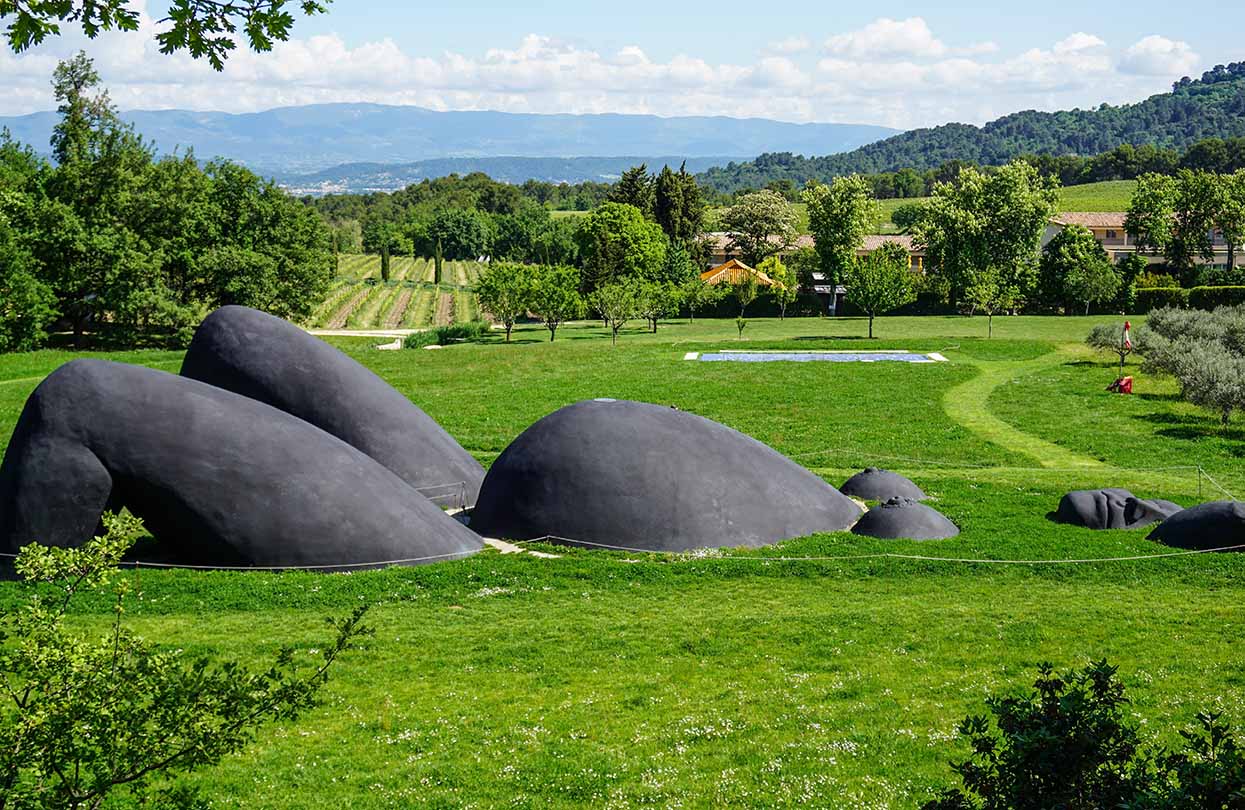
Mater Earth by Prune Nourry, Château La Coste, Image by Shutterstock
Lunch at Francis Mallmann’s open-fire restaurant was a masterclass in ambiance. Dishes smoked over wood and vegetables shone in fresh olive oil. Cézanne’s influence lingered not in paint, but in structure and palette.
Living the Canvas: Villa Saint-Ange Immersion
My final two nights were spent at Villa Saint-Ange, a neoclassical mansion turned 5-star retreat. Here, Cézanne was not an exhibit but a lifestyle.
Workshops taught guests his palette and brush techniques. Evenings at Villa Saint-Ange were where the day’s impressions came to rest—glass in hand, garden all around, the hush of a Provençal night settling in like silk. One night, we gathered under olive trees for an open-air salon: a musician played Debussy while an art historian traced Cézanne’s impact on Rothko and Picasso.
Read More: A Sanctuary of Elegance: Le Couvent des Minimes in Provence
Another morning, I woke early and slipped into the spa’s marble hammam, the steam catching golden light just like in Cézanne’s watercolors. It wasn’t just luxury for its own sake—it was luxury in harmony with place. A kind of stillness that teaches you to see.
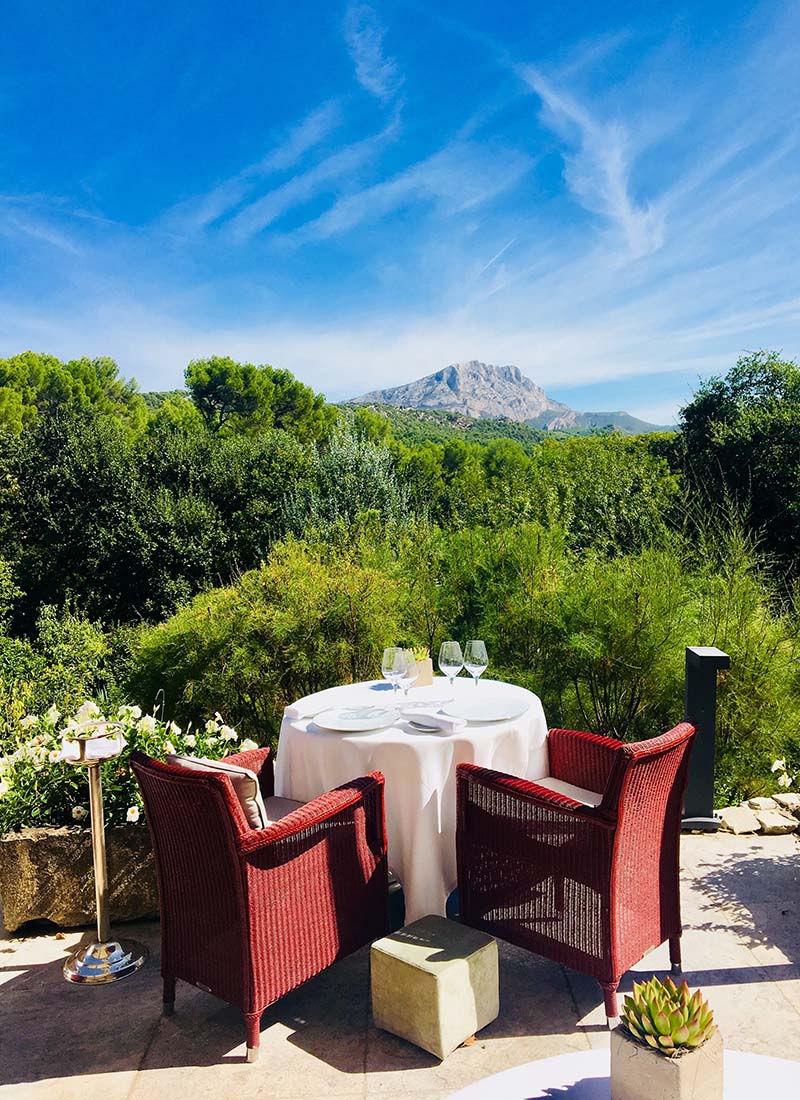
Views of Mont Sainte Victoire, Image by Shutterstock
Perhaps most poignant was the guided rim walk at dawn, where, led by a local artist, we circled Mont Sainte-Victoire’s limestone flanks as pale light slowly revealed wild rosemary and hidden pools. We didn’t paint; we observed quietly, listening to birds and watching the rocks warm and change hue. Cézanne would have understood the quiet devotion in each careful step.
Beyond the Masterpieces: Why 2025 in Aix Matters
This year isn’t simply an anniversary. It’s an invitation to inhabit beauty. The city has threaded Cézanne through every possible texture of life—from art and architecture to cuisine and conversation.
Read More: All Aboard Through France’s Pretty Waterways
Luxury here isn’t performative. It’s sensorial. Quiet. Thoughtful. Whether it’s a glass of wine sipped overlooking ochre hills, or a single hour alone in the quarry where modern art was born, Aix offers something few destinations can: the ability to feel like a living brushstroke in someone else’s masterpiece.
And if you let it, it becomes yours too. ◼
Subscribe to the latest edition now by clicking here.
© This article was first published online in Aug 2025 – World Travel Magazine.

